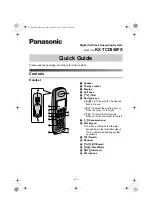
1. Securely clamp the work.
2. Mark the line of cut and grasp the tool with
one hand on the handle and the other
placed on the insulated rubber boot over
the front housing.
Always hold the saw by the
insulated boot on the front
housing. If you saw into a blind area where
live wiring exists, you may be shocked or
electrocuted.
3. Keep the saw footplate firmly against the
work to minimize counter-force (jumping)
and vibration.
4. Squeeze the trigger to start the tool. Let the
saw reach full speed before starting the cut.
Guide the saw so that the blade will move
along the marked line.
SAWING TIPS
Following a few simple tips will reduce the
wear on the workpiece, the tool and the
operator.
1. Blades cut on the draw or back stroke. On
fine work, such as paneling, fiberglass, etc.,
place the good side of workpiece facing
down.
2. Use the correct saw blade for the material
being cut and keep extra blades on hand to
use when others become dull. Replace
cracked or bent blades immediately.
3. Select the appropriate cutting speed.
4. To reduce the risk of injury, be sure the
blade always extends beyond the footplate
and work throughout the stroke. Blades
may shatter if the front on the blade hits the
work and/or the footplate.
5. When cutting metal:
- Apply a lubricant for easier, smoother,
faster cutting and longer blade life.
- For non-ferrous metals, aluminum,
bronze or brass, use a stick wax on the
blade.
- For ferrous metals, iron and steel, use
machine or cutting oil along the surface
to be cut.
-12-
Using the Saw
!
WARNING
WRONG RIGHT
The manufacturer is not responsible for radio
interference caused by unauthorized
modifications to this equipment. Such
modifications could void the user’s authority
to operate the equipment.
This device complies with Part 15 of the FCC
Rules. Operation is subject to the following two
conditions:
1) This device may not cause harmful
interference, and
2) This device must accept any interference
received, including interference that may
cause undesired operation.
NOTE!
This equipment has been tested and
found to comply with the limits for a Class B
digital devices, pursuant to Part 15 of the FCC
rules. These limits are designed to provide
reasonable protection against harmful
interference in a residential installation. This
equipment generates uses and can radiate
radio frequency energy and, if not installed and
used in accordance with the instructions, may
cause harmful interference to radio
communications. However, there is no
guarantee that interference will not occur in a
particular installation. If this equipment does
cause harmful interference to radio or
television reception, which can be determined
by turning the equipment off and on, the user is
encouraged to try to correct the interference by
one or more of the following measures:
• Reorient or relocate the receiving antenna.
• Increase the separation between the
equipment and receiver.
• Connect the equipment into an outlet on a
circuit different from that to which the
receiver is connected.
• Consult the dealer or an experienced
radio/TV technician for help.
FCC Caution:
BM 2610022011 04-12_BM 2610022011 04-12.qxp 4/17/12 2:10 PM Page 12













































